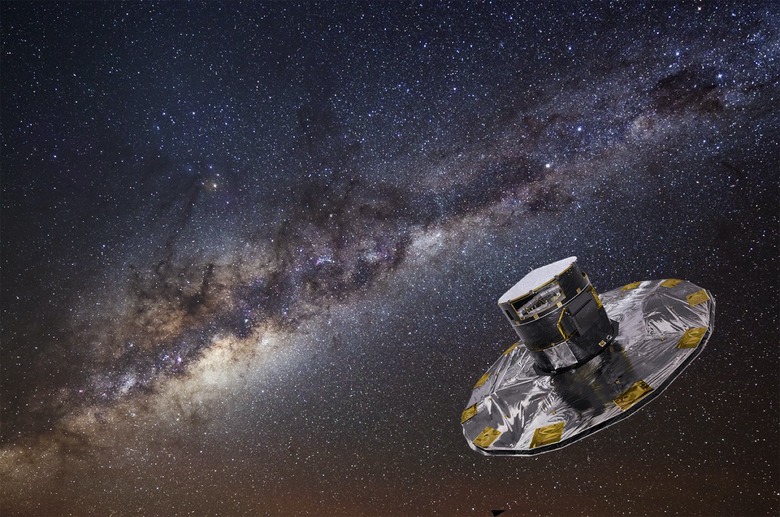A Wild White Dwarf Theory Explains This Monumental Merging
A bizarre ultra-massive white dwarf may have an even stranger explanation than astronomers could've predicted, with a new study suggesting the super-ancient anomaly was once two stars that joined. White dwarfs are created when a relatively low-mass star burns through its fuel, finally collapsing in on itself into an incredibly dense, furiously hot remnant.
That's the theory, anyway, but sometimes the universe serves up something that just doesn't quite fit. An example of that is WDJ0551+4135, an uninspiring name for a very unique white dwarf spotted by the European Space Agency's Gaia telescope.
Oddly high levels of carbon were spotted in its atmosphere, combined with hydrogen too. That alone was enough to catch the attention of physicists. Using spectroscopy data from the William Herschel Telescope, they figured out the chemical composition of the white dwarf's atmosphere.

"This star stood out as something we had never seen before," Dr Mark Holland, lead author of a study on the white dwarf, and a physicist from the University of Warwick, explains. "You might expect to see an outer layer of hydrogen, sometimes mixed with helium, or just a mix of helium and carbon. You don't expect to see this combination of hydrogen and carbon at the same time as there should be a thick layer of helium in between that prohibits that. When we looked at it, it didn't make any sense."
WDJ0551+4135 is roughly two thirds the size of Earth, which makes it large enough to account for two typically-sized white dwarfs. Positioned around 150 light years from us, it's also roughly twice the mass of the average white dwarf, at 1.14 solar masses. Meanwhile it's also believed to be much older than its counterparts with a similar cooling age, measured by the speed at which it's orbiting the Milky Way.
Weird proof to an already odd theory
The proposed explanation is that the star is an example of a theorized white dwarf merger. That suggests two stars could draw together as one reaches the end of its life, eventually collapsing into a single anomaly. However the expectation is that one such originating star would be larger than the other.
Instead, WDJ0551+4135 appears to have been created when two similarly-sized stars merged. It's also unusual because it failed to reach supernova, something which is believed to happen at over 1.4 solar masses.
"Maybe the most exciting aspect of this star is that it must have just about failed to explode as a supernova – these gargantuan explosions are really important in mapping the structure of the Universe, as they can be detected out to very large distances," Dr. Holland explains. "However, there remains much uncertainty about what kind of stellar systems make it to the supernova stage. Strange as it may sound, measuring the properties of this 'failed' supernova, and future look-alikes, is telling us a lot about the pathways to thermonuclear self-annihilation."
The hope is that future instruments will be able to independently assess the origins of merged stars using a technique known as asteroseismology. That tracks the oscillations in stars, and allows physicists to infer their internal composition.
IMAGE: University of Warwick/Mark Garlick
